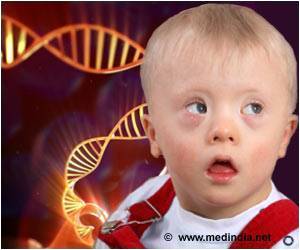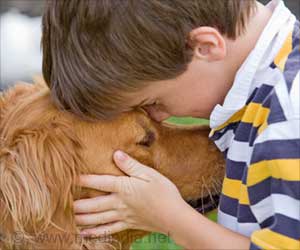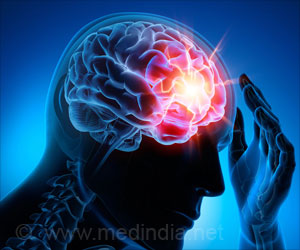A new move by the British House of Commons and Lords could pave the way for laws that would enable parents to go in for saviour siblings to treat other family suffering from non-fatal ailments.
The saviour siblings saga is hitting new highs. A joint committee of the British House of Commons and Lords has called for laws that would enable parents to create children in order to take stem cells from them for treatment of other family members suffering from a range of serious disorders.
Presently the law in that country allows parents to use IVF procedures to select embryos that will be a genetic match to older siblings with life-threatening diseases, such as a rare blood disorder.The new call would mean children could be created to help treat diseases such as sickle-cell anaemia, renal failure, kidney disorders and spinal diseases.
It could also, when science allows, open the way to treating other conditions such as autism.
The proposals are likely to provoke controversy over the ethical implications of creating a child simply to use tissue to cure another family member.
Phil Willis, the chairman of the committee, said the laws had to be drawn up to cover potential future scientific developments that would allow serious medical conditions to be treated using the technique without having to draft new legislation each time.
Willis said: "There are conditions such as autism that are not life-threatening but create serious disabilities for young people and throughout their adult lives.
Currently doctors can take stem cells from the umbilical cord or bone marrow of babies who are a genetic match of their siblings for use in transplants.
Willis made it clear that saviour siblings cannot currently be used to help children with autism, but that it was an example of the kind of serious condition that the committee believed should be tackled by the technique if future scientific developments allowed it.
The committee makes the proposals in a call for "sweeping changes" to the Government's draft Human Tissues and Embryos Bill, designed to replace existing laws on fertility treatment and embryo research.
In a report, published a couple of days ago, the MPs and peers studying the Bill say: "Given the Government's apparent acceptance of the principle of selecting for 'saviour siblings' we do not understand why the practice is limited to 'life-threatening' conditions capable of treatment using umbilical cord blood stem cells.
"We recommend that the draft Bill be amended to substitute 'serious' for 'life-threatening'."
The saviour sibling must have the same type of tissue as the brother or sister being helped.
Embryos are produced through the normal IVF procedure of fertilising a woman's eggs with a man's sperm in the lab.
A cell is removed from each of the resulting embryos at about three days old. Only those found to have a tissue type match with the sick sibling are considered for implantation into the mother's womb.
Once the saviour sibling is born, blood from the umbilical cord is collected and can then be used for a stem cell transplant.
Another option is a bone marrow transplant but not until the child is a year old.
The term designer babies has been used to describe offspring from parents who can select traits such as looks, eye colour and intelligence in their offspring.
However such attributes are the results of interactions between thousands of unknown genes as well as environmental factors, while genetic tests can only pick up one or two genes.
Even if someone wanted to do this, the scientific knowledge to do so does not exist.
Pro-life campaigners reacted angrily, saying the proposal involved creating babies primarily to provide medical treatment for other family members.
Josephine Quintavalle, of Comment on Reproductive Ethics, said: "This process is wrong because choosing one embryo means discarding the others, and because the purpose of creating that child is not for its own sake but for its cord blood."
But Raj and Shahana Hashmi, parents who won a legal battle to be allowed to have a baby with a tissue match to treat their son Zain who suffers from thalassaemia, welcomed the proposals.
Hashmi, who has so far been unable to give birth to a baby of the right tissue type, said: "This is a great step forward for families who find themselves in this heart-breaking situation."
Dr Simon Fishel, of the Care Hospital, Nottingham, said his clinic, a leading centre for these techniques, has one patient who is pregnant with a saviour sibling and four women about to start treatment.
Dr Fishel said: "I welcome this recommendation. None of the patients that seek this sort of health care option would do so unless it was pretty serious.
"Therefore to my mind it is a private family matter with the involvement of a registered clinician."
The Government's draft Bill states that scientists should be allowed to create cytoplasmic embryos, using animal eggs with their nucleus replaced with human genetic code for research purposes.
However it bans so-called "true human-animal hybrids - made by fertilising a human egg with animal sperm or vice versa".
The joint committee report argues that if Parliament backs the creation of inter-species embryos under licence in any form, then each research proposal should examined by the regulatory authorities - currently the Human Fertilisation and Embryology Authority.
It also called for a free vote in both Houses on the Government's proposal to remove the requirement of IVF doctors to take into account the need of the child for a father.
Committee members want the provision retained, but in such a way that it refers to the need for two parents.
They also said the Government's proposed merger of the Human Fertilisation and Embryology Authority and the Human Tissue Authority into one body should be scrapped.
The Department of Health is expected to examine the committee's proposals and respond in the autumn, in time for a Bill to be included in the Queen's Speech in November.
Source-Medindia
GPL/B
 MEDINDIA
MEDINDIA
 Email
Email





